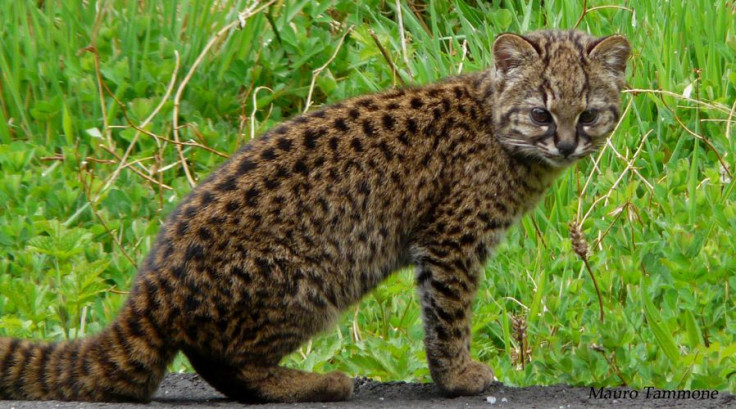Smallest American Wild Cat Is Threatened But Tougher Than You Think

The smallest American wild cat is under threat from humans killing it and stealing its land, but scientists have found that it is a more resilient animal than previously thought.
According to new research, in the Journal of Applied Ecology, people persecute the güiña because it has been known to attack livestock and deforestation has taken a toll on the species. But the key to saving this species, Leopardus guigna, from becoming endangered or even extinct might be to team up conservationists with farmers — in the face of losing forested land, the güiña can find refuge in large agricultural areas.
The wild cat is also known as the Chilean cat, kodkod and guiña. This creature is the smallest wild cat in North and South America and is mostly found in Chile. It is listed as vulnerable on the International Union for Conservation of Nature and Natural Resources’ threatened species list, putting it one notch below endangered.
The IUCN estimates that there are fewer than 10,000 of the animals left in the wild and their ranks are decreasing.
“Current main threats for güiñas include habitat loss and fragmentation, and direct persecution by humans,” according to the IUCN.
Predators like wild cats are often at odds with humans because people perceive them as a threat, but these cats offer more to the environment than first meets the eye — and the güiña is no exception.
“An important part of their diet are rodents and one of the [rodent] species … is also the main [host] for the deadly hantavirus,” a potentially fatal infection for humans, researcher Nicolás Gálvez told International Business Times. “So their presence is beneficial for rural communities.”
The new study, finding the resilience of the güiña and its ability to live in agricultural areas, offers some hope for the cat. Its conclusions come from images of the wild animal, data from traps and questionnaires of locals on their experiences with the creature.
“Large, intensive agricultural areas are actually well suited for the güiña and should not be dismissed as poor quality habitat,” the University of Kent said in a statement. “This is because there are often unfarmed areas that provide refuge, food resources and suitable conditions for rearing young.”
The researchers are suggesting that farmers should play a role in conservation efforts, particularly those with large swaths of land where the wild cat lives and that could be protected.
“While the risk of a güiña being killed by a human is higher in more densely populated farming areas, our questionnaires indicate that only 10 percent of the rural inhabitants have killed a güiña over the last decade,” researcher Zoe Davies said in a report from the British Ecological Society. “This suggests that persecution is much less of a threat to their survival than the subdivision of farms.”
The scientists investigating the Chilean cats said their method for evaluating the species could work for investigating other small to medium-sized cats in the wild as well.
Gálvez told IBT that those creatures could include the endangered Andean cat in the mountains of western South America; the endangered flat-headed cat from southeast Asia; the vulnerable fishing cat from southern Asia; and the near-threatened marbled cat and rusty-spotted cat, both in Asia.
© Copyright IBTimes 2024. All rights reserved.











